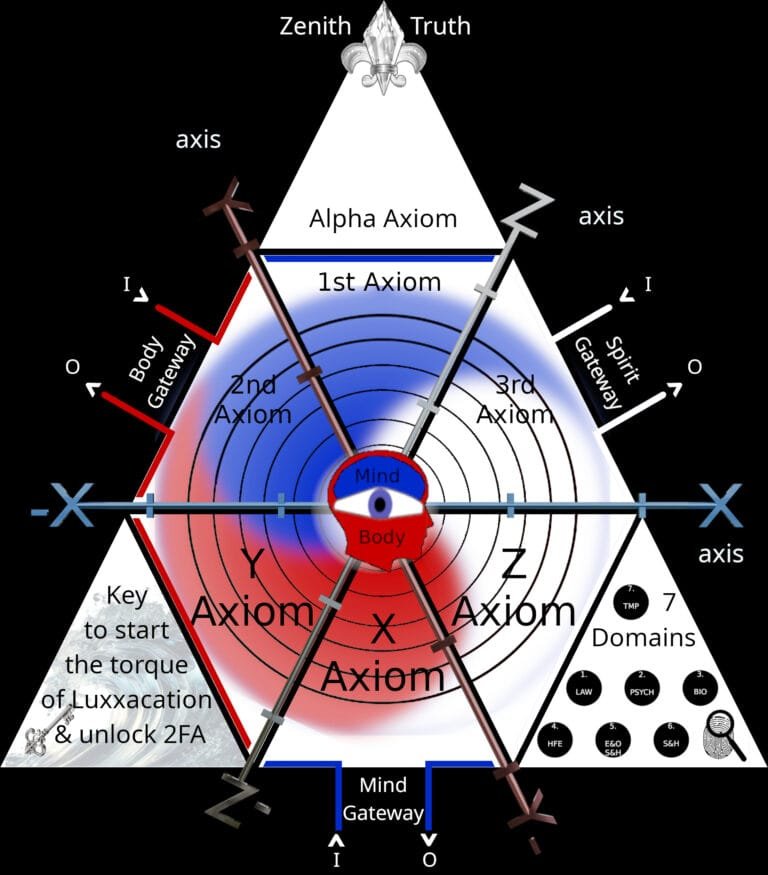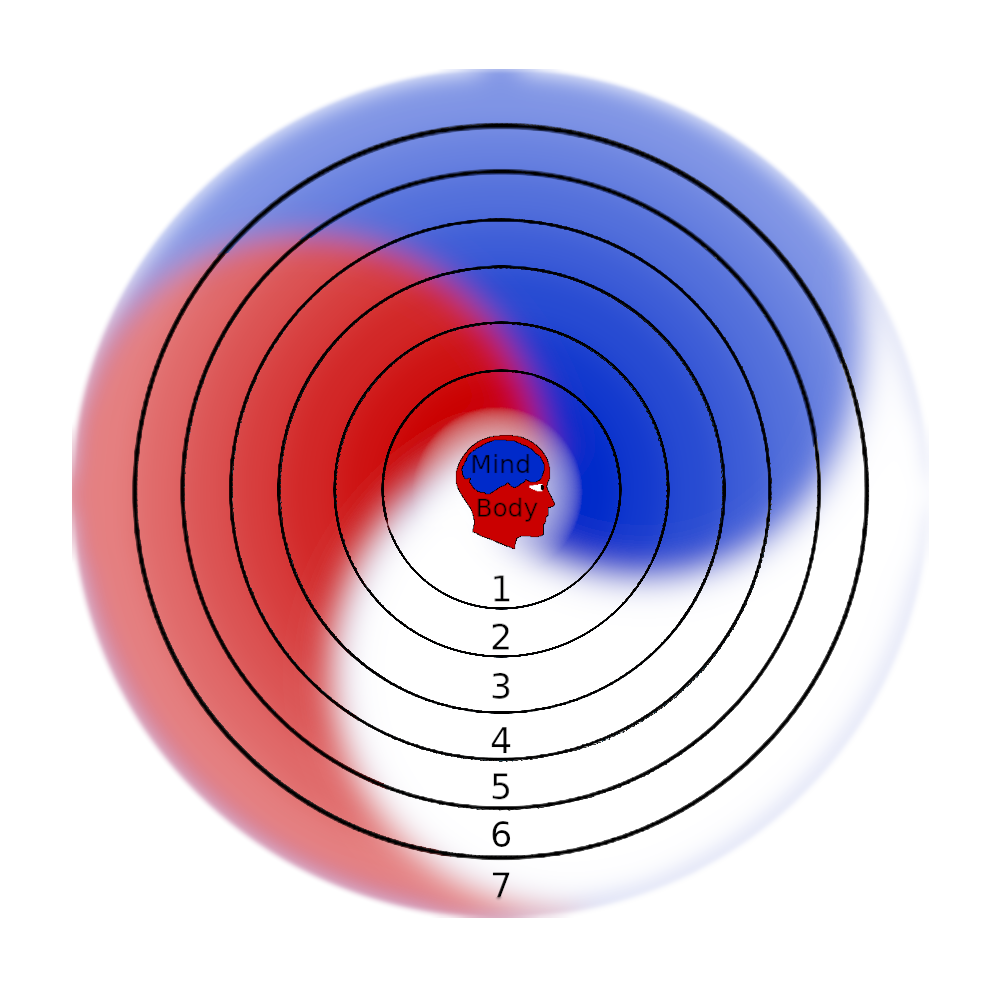The 2 sets of factors authenticating XSE
Think of 2FA (Two Factor Authentication) as there are 2 categories of Factors (Actual and Analytical) to Authenticate XSE’s method.

In the context of XSE, 2FA (Two-Factor Authentication) refers to the abstract verification of the application of Independent Integration Systems Engineering methods based on comprehensive use of XSE’s actual and analytical factors, which are unlocked with the XSE Key, and then completely operable from the XSE Vantage Point. Just as two factor authentication occurs within a situation where access to an important system is being sought, so too, XSE’s 2FA is critical to pass verification that application of all 40 of XSE’s factors are accounted for to access XSE’s Vantage Point. As systems engineering’s purpose is to achieve desired results, and XSE is focused on the integrity and strength of the human, the value of XSE is innately worthy of protection and validation. Typically, the correct password is needed to trigger the 2FA process. In XSE, this password is synonymous with the XSE key. Without using the key, any and all attempts at passing through the 2FA and into the XSE Vantage Point will most likely be unsuccessful. Using the XSE Key and passing through XSE’s 2FA opens access to the XSE Vantage Point for an astronomical view of the system, where XSE’s factors can be applied with clear and unobstructed vision. It is only logical that even the best tools can be not only useless but possibly even unsafe if not used with clear vision, accurate information, or proper skills. A superficial practice of XSE (Luxxacation) would not pass the 2FA unless all of the actual and analytical factors were applied. The combination of evidenced actual factors and theoretical reasoning of analytical factors helps to validate the comprehensiveness and reliability of the method, providing greater confidence in its applicability and potential impact on the system of interest.
The 40 Factors of XSE
20 Actual Factors

“Actual factors” refers to the existing elements that have a direct or indirect impact on a situation, outcome, or process. These 20 factors are real and observable. In various contexts, “actual factors” could encompass physical components, environmental conditions, demographic characteristics, economic variables, or any other aspect that influence the subject under consideration. The 4 sets of Actual Factors of XSE are factors that are real, even if they go unacknowledged. The logic supporting the reality of the Actual Factors is demonstrated below in the drop down boxes regarding the 3 Aspects of the Human, 3 Gateways, 7 Spheres of Integration, and 7 Domains of Study. XSE provides illustrative representations of each of the Actual Factors and uses color (blue, red, and white) to signify the aspects of MBS (Mind, Body, Spirit). These Figures are not to be taken literally, but only are presented as visual diagramatic tools to assist the systems engineer in viewing the SOI from a vantage point that facilitates system analysis.
XSE's Four Sets of Actual Factors (3-3-7-7)

Every human has a mind, body, and spirit. These are color coded throughout XSE using blue for the mind or mental aspect, red for the body or physical aspect and white for the spirit or spiritual aspect. All 3 of these aspects of the human are intimately integrated, one can not function without impacting both of the other 2 aspects of the human.
The 3 Gateways in XSE refer to the components in systems engineering that permit entry and exit into and out of the system, based on the rules and validations enforced by control points within. In XSE the 3 Gateways pertain to the Mind, Body, and Spirit.
- Function of Gateways: Gateways act as the access points or interfaces between the system and the external world (or between subsystems within a larger system).
- Role in Data Flow: Gateways facilitate the flow of data or resources into and out of the system, handling the logistics of format conversion, protocol alignment, and connectivity.
These 7 Spheres are diagramatic representations of the levels of human integration (MBS), beginning with: 1. Independent Integration (X) of the Individual, 2. Family/Home, 3. Professional/Business, 4. Community/Local, 5. National/Counry, 6, Global/World, 7. Cyber/Beyond. Whether or not a person acknowledges or believes that they are a part of a larger system, they are an integral part of each one of these spheres as demonstrated on The 7 Spheres of Integration.
The 7 Domains of Study used in XSE are: 1. Law, 2. Psychology, 3. Biology and applicable sciences, 4. Human Factors Engineering, 5. Environmental & Occupational Safety & Health, 6. Manpower, Personnel, & Training and 7. Survivability & Habitability. The first 3 domains of study are specifically chosen in accordance with the 3 Aspects of the Human (MBS). As explained on each of the respective domain pages: 1. Law corresponds to the spirit, 2. Psychology corresponds to the mind, and 3. Biology and applicable sciences corresponds to the body. The last four domains of study (4-7) are retained from Human Systems Integration (HSI) which is an approach to systems engineering widely used by governments and large organizations throughout the world. XSE retains these 4 domains not only because of the innate value that they provide, but also as an indispensable analytical tool to assist with reverse engineering, especially of the individual. Please see each of the specific pages on the domains of study for more details.
20 Analytical Factors

Once the Actual Factors are understood, XSE protocol proceeds towards positioning the Actual Factors on the XSE Axiomatic System using the components and Axioms contained in the Analytical factors, which function together iteratively to advance the system into a state of optimization. Analytical factors refer to various elements or components that may be considered, evaluated, or utilized in the process of analysis. These factors may involve theoretical frameworks, mathematical models, logical reasoning, or qualitative assessments. These factors are often integral to analytical methodologies and techniques used in fields such as science, engineering, business, and data analysis. Analytical factors can include variables, parameters, criteria, metrics, indicators, and other relevant aspects that are examined or measured to gain insights, make decisions, or solve problems. The selection and interpretation of analytical factors play a crucial role in the accuracy, effectiveness, and relevance of analytical processes and outcomes.
XSE's Four Sets of Analytical Factors (3-3-7-7)

The 3 XSE Axes (plural of axis) are the XYZ axes, forming XSE’s epoch-axiomatic coordinate system. The X axis gauges system analysis. The actual stage of the system life cycle is plotted along the Y axis. The Z axis measures sources and resources. More details can be found on The XSE Axiomatic System.
The 3 Elements of XSE are the 3 elements of the “torquing” motion of XSE, also known as Luxxacation. Namely: Take Time, Build Strength, Rise Above. Luxxacation is an iterative process and sets the system in motion to advance in XSE.
The Positions of XSE and their corresponding Advancing Assets are: 1. Luxury Systems Engineer which correlates to mastering the XSE Key (used to unlock XSE’s 2FA and start the “torque” of XSE’s Luxxacation), 2. Investigative Systems Engineer which correlates to mastering Investigative Skills (used to pass through XSE’s 2FA in order to enter the XSE Vantage Point), & 3. Pilot Systems Engineer which correlates to the XSE Vantage Point (used to gain all-encompassing and astronomical view of systems and explore the 4th dimension). The Fourth Advancing Asset is the XSE Zenith, which is Truth. The highest position that a person can attain in XSE is to be a Pilot Systems Engineer, at the Vantage Point where the all-encompassing view positions one to behold the Truth. However, as no human on earth can ever be omnipotent or know absolutely everything, the Zenith itself is not paired with a position attainable to a person using XSE.
There are 7 axioms used in Independent Integration Systems Engineering:
The Alpha Axiom- “Integrity is founded on truth.”
The First Axiom- “True and optimal intelligence is founded on integrity.”
The Second Axiom- “True and optimal strength is founded on integrity.”
The Third Axiom- “True and optimal freedom is founded on integrity.”
The X Axiom- “Using critical and creative thinking augments intelligence.”
The Y Axiom- “The application of optimal choices enhances strength.”
The Z Axiom- “Seeking authentic and ultimate sources maximizes freedom.”
These Axioms are used within the XSE Axiomatic Method as means for valuation, plotting, positioning, analysis, application and performance of X Systems Engineering within the XSE Axiomatic System. See The XSE Axiomatic System for more details.
The XSE Peak: A Summary of XSE's 40 Factors
XSE’s Alpha Axiom “Integrity is founded on truth” is at the core of the XSE Axiomatic System.
The Diagram below shows the Alpha Axiom: “Integrity is founded on truth” at the top of the XSE Peak, therefore positioning Truth at the Zenith (marked with the diamond at the top of the peak). At the foundation are the irrefutable axioms that appeal logically to common sense, in particular, the X, Y, & Z Axioms (see below). The diagram below shows the intentional hierarchy of then the 1st-3rd Axioms above the X,Y, and Z Axioms. Ascending to the Zenith can only be achieved through seeking truth, as depicted on the peak with the Alpha Axiom “Integrity is founded on truth.” The journey to the zenith of the XSE Peak is approached by first grasping the XSE Key, to start the “Torque” of XSE and for complete XSE functional analysis, both the 7 spheres of integration and the 7 domains of study must be taken into account as inputs and outputs passing through the Gateways of the system.


Above: the 3 aspects of the human are shown color coded (blue is for the mind, red is for the body, white is for the spirit) and are carried throughout the Seven Spheres of Integration (shown as rings around the individual in the center), from: 1. Independent Integration (X), 2. Family/ home, 3. Business/ Professional, 4. Community/ local, 5. National, 6. Global, & 7. Beyond. For analysis, plot the system on the X, Y, and Z axis, and evaluate the influence related to each sphere as inputs and outputs passing through the 3 Gateways.

The X Axiom (Using critical and creative thinking augments intelligence) correlates to the 1st mathematical dimension and 1st element of Luxxacation (“torquing” motion): “Take Time” and to the First Axiom (True and optimal intelligence is founded on integrity), which correlates to the X Axis (measuring system analysis), shown in blue (for the mind) above.
o o o o o o o Above: The 7 domains of study are depicted as 7 satellites revolving around the SOI and 7 Spheres as shown below in the XSE Framework 3-D Model. For complete XSE functional analysis, each of the 7 domain’s influences must be evaluated as inputs and outputs of the 3 Gateways of the 3 Aspects (Mind, Body, and Spirit) of the system.

The Y Axiom (The application of optimal choices enhances strength) correlates to the 2nd mathematical dimension and 2nd element of Luxxacation (“torquing” motion): “Build Strength” and to the Second Axiom (True and optimal strength is founded on integrity), which is derived from the Y Axis (for plotting actual stage of system life cycle), shown in red (for the body) above.

The Z Axiom states that “Seeking authentic & ultimate sources maximizes freedom” is correlated to the third dimension and 3rd element of Luxxacation (XSE’s “torque”): “Rise Above” & the 3rd Axiom (True & optimal freedom is founded on integrity), which is based on the Z Axis (rating of sources) shown white for the spirit above.
From the Fortified Foundation of the XSE Peak to the Zenith: Truth
The Advancing Assets of XSE, namely: 1. The XSE Key (used to unlock XSE’s 2FA and turn on the “torque” of XSE’s Luxxacation), 2. Investigative Skills (used to pass through XSE’s 2FA in order to enter the XSE Vantage Point), & 3. The XSE Vantage Point (used to gain all-encompassing and astronomical view of systems and explore the 4th dimension) are also markers of where a person is in the knowledge and application or practice of Independent Integration Systems Engineering. Grasping the XSE Key correlates to the Position of XSE’s Luxury Systems Engineer. Investigative Skills are the 2nd advancing asset and correlate to the Position of XSE’s Investigative Systems Engineer, signifying a stage of questioning, learning and applying the factors used in XSE, and seeking science-based facts and ultimately, the truth. The Advancing Assets of XSE are retained and built-upon, therefore, as one enters the Vantage Point, they maintain and still leverage the first two Advancing Assets for their benefit, but now are able to operate from the vantage point, which not only provides an all-encompassing and astronomical view of systems, but likewise also positions the individual as an XSE Pilot Systems Engineer, having passed through XSE’s 2FA, and skilled in exploration of the 4th dimension and set on a path of seeking and finding the Zenith of XSE: Truth.
The 3 axes create the framework for XSE's epoch-axiomatic coordinate system...
Above is shown the XSE Framework 3-D model. For an overview of the formula of how to apply these factors, see The XSE Method.
...which is fully visible by entering XSE's Vantage Point to explore the 4th dimension.

The key to accelerated advancement: take a step back, go beyond the typical earthly constraints, and enter the XSE Vantage Point for an astronomical view that goes beyond time and is all-encompassing of the 4th dimension. Look with piercing, knowing eyes right through the exterior and into your system of interest, what is it made of? What is its substance? Is it strong? Or is it weak and fragmented, unable to hold up to even the first test? This will predominantly be determined by the other 3 dimensions’ integration into the SOI.
